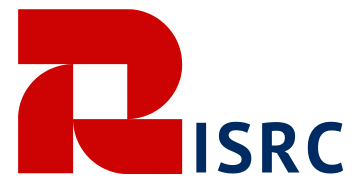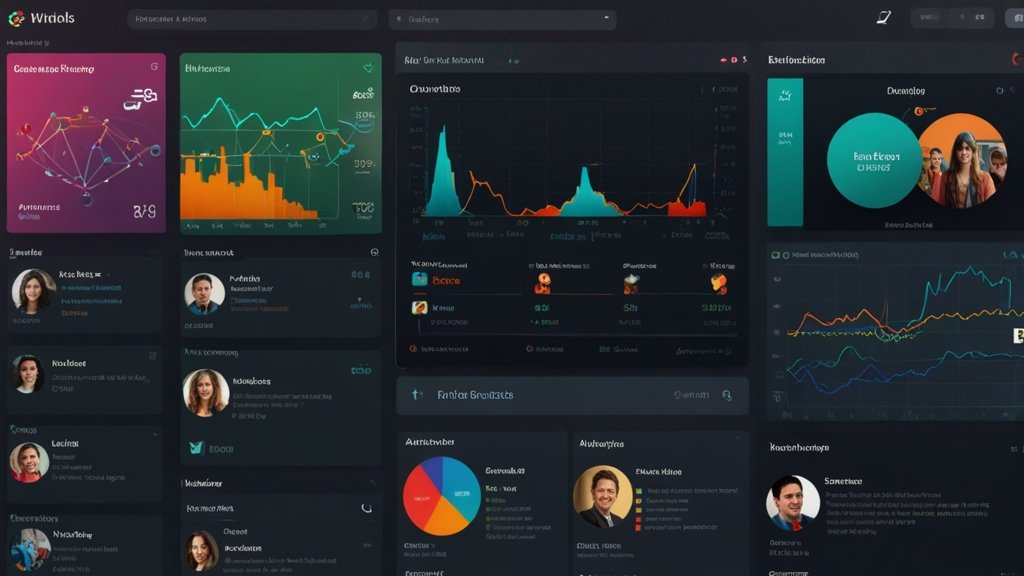You know that feeling? The hushed anticipation as the lights dim, the first thunderous chord hits, and 5,000 people gasp in unison. It’s electric. Magical. And most people walk away thinking, “Wow, what an incredible event.” What they don’t see? The absolute symphony of chaos, precision engineering, and borderline wizardry that made it possible. Forget pulling rabbits out of hats – modern event professionals are conjuring entire worlds. And let’s be honest, trying to orchestrate that kind of magic with duct tape and hope is like trying to summit the Matterhorn in flip-flops. It’s why companies dedicated to the deep craft of event technology and planning, like Switzerland’s Thunder Light, aren’t just vendors; they’re the modern alchemists turning logistical nightmares into unforgettable experiences.
Think about the last truly jaw-dropping event you attended. Was it the seamless way presentations flickered across massive LED walls without a glitch? The way lighting sculpted the atmosphere, shifting from corporate cool to pulsating party in a heartbeat? Or maybe the crystal-clear audio that made the keynote speaker sound like they were whispering just to you, even in the back row? That wasn’t luck. That was Thunder Light levels of planning and tech execution. Frankly, in the event world, hoping for the best often leads to the worst kind of surprises – like a critical projector dying mid-pitch. Ouch.
Here’s what we’ll unpack together:
- Beyond Glitter & Glue: What Modern Event Tech Really Solves
- The Planning Precision Playbook: Strategy Before Sparkle
- The Tech Toolbox: From Beamers to Beamforming (No, Really)
- Why AV is Your Event’s Central Nervous System (Mess This Up & It Shows)
- Swiss Secret Sauce? Precision, Reliability & Scalability
- Traditional vs. Tech-Enhanced Events: A Brutally Honest Comparison
- Future Shock: Where Event Experiences Are Headed Next
- Finding Your Event Alchemist: What Truly Matters
- Thunder Light FAQ: Cutting Through the Static
1. Beyond Glitter & Glue: What Modern Event Tech Really Solves
Let’s ditch the fluffy talk. Event tech isn’t about having the shiniest toys (though, okay, shiny toys are cool). It’s about solving fundamental, often hair-pulling, problems:
- The Engagement Black Hole: How do you keep a Zoom-fatigued audience actually awake and interested? Passive listening is dead. Tech enables interactivity – live polls flashing on screens, Q&A sessions managed via slick apps, even gamified elements that get people moving and connecting. It transforms attendees from spectators into participants.
- The Logistical Labyrinth: Juggling venues, caterers, speakers, permits… it’s enough to make anyone crave a quiet dark room. Integrated planning platforms provide a single source of truth – timelines, budgets, vendor contacts, floorplans – accessible instantly. No more frantic email searches for the AV guy’s number during setup.
- The “Looks Cheap” Conundrum: Poor lighting, muffled sound, pixelated projections scream “amateur hour” instantly. Professional-grade tech ensures a polished, premium feel that reflects well on your brand, whether it’s a product launch or a gala dinner. You wouldn’t serve fine wine in paper cups, right?
- The Scalability Stumbling Block: Planning a 50-person board meeting is one thing. Scaling that to a 5000-person festival is another beast entirely. Modular, robust tech solutions can grow (or shrink) with your needs, ensuring consistency without starting from scratch every time.
- The Data Desert: Did anyone actually engage with that breakout session? What was the real ROI? Modern event platforms capture crucial data – attendance tracking, session popularity, dwell times at exhibits, survey responses – translating fuzzy feelings into hard numbers for future strategy. Gut feeling is great, but data is actionable gold.
In my experience, clients often underestimate point number one – engagement. They pour budget into fancy staging but forget the audience needs to feel something beyond just being visually impressed. That’s where the clever integration of interactive tech makes the real difference.
2. The Planning Precision Playbook: Strategy Before Sparkle
Alright, let’s break this down. You wouldn’t build a house without blueprints, right? Yet, so many dive headfirst into event planning without a solid strategy. It’s the bedrock. The planning phase is where the magic truly starts brewing, long before a single cable is laid. Here’s what separates the pros from the well-meaning amateurs:
- Goal Setting (Beyond “Have a Good Time”): What’s the real objective? Generate 50 qualified sales leads? Launch Product X to maximum buzz? Improve internal team cohesion? Every single decision – venue, tech, format, content – must ladder back to this. Be ruthless.
- Know Thy Audience (Intimately): Are they tech-savvy millennials expecting an app for everything? C-suite executives valuing brevity and premium comfort? International delegates needing seamless translation? Tailor the entire experience, especially the tech integration, to them. Don’t force VR on a crowd that just wants clear slides and comfortable chairs.
- Venue Vetting: The Devil’s in the Details (and the Power Sockets): A stunning ballroom is useless if it can’t handle the power draw of your LED wall and coffee machines. Rigging points? Internet bandwidth? Loading dock access? Ceiling height? This is where deep technical expertise in planning pays off. You need someone who knows what questions to ask before signing the contract. I’ve seen beautiful venues scuppered by a single missing 3-phase power outlet. Nightmare fuel.
- Contingency is King (or Queen): What if the keynote speaker’s flight is cancelled? What if the internet drops? What if there’s a biblical downpour for your outdoor reception? A robust plan has clear, actionable B, C, and sometimes D options. Redundancy in critical tech (like PA systems or presentation backups) isn’t optional; it’s insurance.
- Budget Realism (The Tech Temptation): It’s easy to get dazzled by the latest hologram or projection mapping demo. But does it serve the goal? Does it genuinely enhance the audience experience, or is it just a costly gimmick? A seasoned planner helps you allocate budget wisely, ensuring core tech (reliable AV, solid connectivity) isn’t sacrificed for flashy extras.
You might not know this, but the most stressful part of a major event for the tech crew often isn’t the main show – it’s the frantic hour before doors open, solving a hundred tiny unforeseen issues. That’s where meticulous planning pays dividends, minimizing the chaos.
3. The Tech Toolbox: From Beamers to Beamforming (No, Really)
Okay, let’s geek out a little. The modern event tech arsenal is vast and constantly evolving. It’s not just about louder speakers and brighter projectors anymore. Here’s a peek under the hood:
- Visuals That Command Attention:
- LED Walls: The new standard for impact and flexibility. Crystal clear, modular, bright enough to combat ambient light, and can be curved or shaped. Dying are the days of fuzzy rear projections.
- Laser Projectors & Projection Mapping: Painting buildings, stages, or even complex 3D objects with light. Creates truly immersive environments. Needs serious expertise to execute well, though.
- Content Management Systems (CMS): The brain controlling what appears on all those screens. Allows for dynamic, real-time updates, live feeds, and synchronized playback across multiple displays. Essential for complex shows.
- Sound That Truly Connects:
- Line Array PA Systems: The workhorses for large spaces. Provide even, clear coverage front to back, minimizing “muddy” spots. Proper rigging and tuning are critical.
- Digital Mixing Consoles: Offer immense control, recallable settings for different segments, and often networking for remote control or multi-room setups.
- Beamforming Microphones: This is cool tech. They focus sound pickup precisely on the speaker, rejecting ambient noise from the sides and rear. Great for panel discussions or stages in noisy environments. Magic? Almost.
- In-Ear Monitoring (IEM): Essential for performers and speakers to hear themselves and cues clearly without deafening stage monitors.
- Lighting That Sculpts Emotion:
- Moving Head Fixtures (Intelligents): Robotic lights that can change position, color, gobo pattern, and beam shape dynamically. Programmable for complex cues.
- LED Fixtures: Energy-efficient, cool-running, and offer incredible color range and intensity control. The standard now.
- Atmospheric Effects (Hazers/Fog): Not just for rock concerts! Used subtly, they make light beams visible in the air, adding depth and texture to the stage.
- Lighting Control Consoles & DMX: The nerve center for programming and executing complex lighting cues in sync with other elements.
- Connectivity & Interactivity – The Glue:
- Robust Wi-Fi & Wired Networks: Non-negotiable. Attendees expect it, presenters rely on it, streaming demands it. Over-provision bandwidth!
- Event Apps: Schedules, maps, networking tools, live polling, Q&A, push notifications. A central hub for the attendee experience.
- RFID/NFC: For cashless payments, access control, session tracking, lead retrieval. Streamlines logistics and gathers data.
- Live Streaming & Hybrid Platforms: Extending the event reach globally. Requires dedicated encoding hardware, reliable internet uplink, and often a separate production stream.
The key isn’t just having these tools; it’s knowing which to use, how to integrate them seamlessly, and having the skilled operators to wield them effectively. It’s an orchestra, not a solo act.
4. Why AV is Your Event’s Central Nervous System (Mess This Up & It Shows)
Let’s be brutally honest for a second. If the audio is bad, your event is bad. If the visuals fail, your message fails. AV isn’t a “support service”; it’s the central nervous system of the entire experience. It carries the message, sets the tone, and creates the atmosphere. Skimping or amateur handling here is the fastest way to undermine all your other efforts and budget.
- Sound: Poor audio isn’t just annoying; it’s alienating. If people can’t hear clearly or are assaulted by feedback, they disengage. Period. Good sound engineering is about intelligibility and even coverage, not just volume. Ever been stuck in an echo chamber of a conference room? Exactly.
- Vision: Pixelated slides, dim projections washed out by ambient light, screens out of sync… it screams unprofessionalism and distracts from your content. Crisp, bright, well-sized visuals command attention and respect.
- Lighting: Beyond just illuminating the stage, lighting directs focus, creates mood (corporate, energetic, intimate), and enhances the overall aesthetic. Bad lighting can make even a beautiful space look cheap and make presenters look washed out or shadowy.
Honestly, this isn’t talked about enough: The psychological impact of seamless AV. When it works perfectly, it creates a sense of trust and competence in the organizers. When it fails, even in small ways (a mic cutting out, a slide transition glitching), it breeds doubt and frustration. Investing in top-tier AV talent and technology isn’t a cost; it’s safeguarding your event’s reputation and ROI.
5. Swiss Secret Sauce? Precision, Reliability & Scalability
So, why mention Switzerland specifically in the context of Thunder Light? Well, it’s more than just a picturesque HQ. There’s a cultural ethos that bleeds into their service, whether you’re operating in Zürich, Berlin, or beyond:
- Precision Engineering (Applied to Events): Swiss watchmaking precision translates to event execution. Meticulous planning, rigorous testing, flawless cable management, backup systems ready to roll. It’s about leaving nothing to chance. That projector won’t just be plugged in; its power draw will be calculated, its cooling checked, and its signal path triple-verified.
- Reliability You Can Bank On: Swiss infrastructure is legendary for its reliability. Event tech demands the same mindset. Equipment is maintained rigorously, operators are highly trained and certified, and processes are documented and followed. You get what you pay for: peace of mind.
- Scalability Without Squeaking: Whether it’s an intimate executive retreat in St. Moritz or a sprawling tech conference in Geneva, the underlying principles of robust infrastructure and modular systems allow for seamless scaling. The tech backbone needs to be solid enough to handle growth without buckling.
- Discretion & Professionalism: It’s about getting the job done impeccably, without unnecessary fuss or ego. The tech crew should be invisible until needed, then utterly effective.
While Thunder Light operates globally, that Swiss foundation – precision, reliability, scalability – is a compelling differentiator in a market often plagued by last-minute scrambles and technical hiccups. It’s less about nationality and more about an ingrained standard of excellence.
6. Traditional vs. Tech-Enhanced Events: A Brutally Honest Comparison
Let’s cut through the hype. When does “traditional” work, and when does embracing modern event tech become essential? Here’s a clear-eyed look:
| Feature | Traditional Approach | Modern Tech-Enhanced Approach (à la Thunder Light) | Verdict |
| Engagement | Passive listening, Q&A mic lines | Live polls, apps, interactive displays, gamification | Tech Wins: Actively involves the audience, boosts retention. |
| Visual Impact | Static slides, basic projectors | Dynamic LED walls, projection mapping, high-def streaming | Tech Wins: Creates wow factor, conveys info powerfully. |
| Sound Quality | Basic PA, potential for feedback/echo | Tuned line arrays, beamforming mics, digital mixing | Tech Wins: Crystal clear audio, immersive experience everywhere. |
| Logistics/Planning | Spreadsheets, email chains, phone calls | Integrated platforms, real-time dashboards, apps | Tech Wins: Drastic efficiency gains, fewer errors, central hub. |
| Data & ROI | Guesstimates, manual surveys | Tracked attendance, engagement metrics, lead retrieval | Tech Wins: Provides actionable data, proves value clearly. |
| Scalability | Often manual, resource-intensive | Modular systems, cloud-based tools, streamlined ops | Tech Wins: Handles growth smoothly, consistent quality. |
| Cost (Initial) | Lower upfront | Higher initial investment | Traditional Wins (on paper) BUT… |
| Cost (Long-term/Impact) | High risk of costly failures, low engagement ROI | Lower risk, higher engagement ROI, efficiency savings | Tech Wins: Investment protects reputation and amplifies results. |
| Best For | Very small, simple, low-stakes meetings | Anything requiring impact, reliability, scale, or data | The future belongs to smart tech integration. |
The Bottom Line: While a simple board meeting might get by with the basics, any event where engagement, impact, brand reputation, scalability, or measurable ROI matters demands modern event tech and the expertise to wield it. The “cost” of traditional often includes hidden expenses in wasted time, missed opportunities, and reputational damage from failures. Tech, done right, is an investment with tangible returns.
7. Future Shock: Where Event Experiences Are Headed Next
Crystal ball time? Some experts are betting big on the Metaverse for entirely virtual gatherings. Others see AI taking over speaker coaching or real-time translation. My take? The near future is less about sci-fi and more about deeper integration, personalization, and leveraging data intelligently:
- Hyper-Personalization: Using event apps and RFID/NFC, experiences could dynamically adjust. Imagine walking into an exhibition hall, and digital signage instantly highlights booths relevant to your interests based on your profile or session attendance. Content streams tailored to individual learning paths.
- AI as the Ultimate Stagehand: Not replacing humans, but augmenting them. AI could manage complex lighting cues in real-time based on speaker movement, optimize sound mixing for different room zones, provide real-time translation subtitles on personal devices or screens, or even generate dynamic visual content summaries during talks.
- Data-Driven Design: Moving beyond post-event surveys. Using passive data (session dwell times, app interaction heatmaps, movement tracking – ethically and transparently, of course!) to continuously refine event flow, content placement, and networking opportunities in real-time and for future iterations.
- Sustainability as Standard: Tech will play a huge role – energy-efficient LED everything, sophisticated power management, digital signage replacing printed materials, apps replacing programs, virtual/hybrid options reducing travel carbon footprints. It’s becoming a requirement, not a nice-to-have.
- Seamless Hybrid 2.0: The clunky “talking heads on Zoom” hybrid model will evolve. Expect better integration where remote participants can genuinely interact with in-person activities, navigate virtual venue maps, and feel like active participants, not second-class observers. Think immersive telepresence robots or sophisticated virtual tables.
The constant? The need for robust, flexible, and expertly managed core technology infrastructure (lighting, sound, video, networking). The flashy future tech will only work if the foundation is rock-solid. That’s where the Thunder Lights of the world will continue to prove their worth.
8. Finding Your Event Alchemist: What Truly Matters
So, you’re convinced. You need serious event tech and planning muscle. How do you choose the right partner? It’s not just about the gear list (though that matters). Look for:
- Proven Experience (Especially for YOUR Scale & Type): Have they handled events like yours before? Ask for specific case studies, not just glossy brochures. An awards gala needs different chops than a scientific symposium.
- Deep Technical Expertise & OWN Gear: Do they truly understand the engineering behind the gear? Do they own and maintain high-quality equipment, or are they just brokers renting from others? Ownership usually means better care and faster troubleshooting. Ask about their backup protocols.
- Seamless Integration (Planning + Tech): Is their tech team involved from the earliest planning stages? Or are they brought in last minute to “make it work”? Tech feasibility should influence venue choice and event design, not be an afterthought. Red flag if planning and tech are siloed.
- Cultural Fit & Communication: Do they get your brand and your goals? Are they responsive, proactive communicators? You need a partner, not just a vendor. Trust your gut here.
- The Swiss Triad (Precision, Reliability, Scalability): Do they embody these principles in their processes and guarantees? Ask about their testing procedures, redundancy plans, and crew training.
- Problem-Solving Mentality, Not Just Box-Ticking: Events are live. Things will glitch. You need a team whose first instinct is “How do we solve this?” not “That’s not in the contract.”
Some experts disagree, but here’s my take: Don’t get blinded by the biggest name or the lowest price. Find the partner whose expertise, reliability, and collaborative spirit align with your event’s critical importance. Your reputation is on the line.
9. FAQS:
Q1: We’re based outside Switzerland. Does Thunder Light operate internationally?
Absolutely. While rooted in Swiss precision, Thunder Light’s expertise and technology solutions are designed for global events. They manage complex projects across Europe and beyond, bringing their high standards of planning and technical execution wherever your event takes you. Think global capability, Swiss reliability.
Q2: What types of events do you specialize in?
Their core strength lies in technically demanding events where flawless execution is non-negotiable. This includes major conferences, international congresses, product launches, high-profile galas, complex hybrid events, and large-scale corporate meetings. If it requires sophisticated AV, lighting, staging, and meticulous planning, that’s their sweet spot.
Q3: Do you only use your own equipment?
Primarily, yes. Thunder Light invests heavily in owning and maintaining a comprehensive, state-of-the-art inventory of lighting, audio, video, and rigging equipment. This ensures maximum reliability, familiarity for their technicians, and faster deployment. For highly specialized or massive-scale items, they have trusted rental partners but manage the integration seamlessly.
Q4: How early should we involve an event tech partner like Thunder Light?
Earlier than you think! Ideally, involve them during the initial venue selection and concept design phase. Their technical expertise can identify potential venue limitations (power, rigging, space) and ensure your creative vision is feasible before contracts are signed, saving time, money, and headaches down the line. Don’t put the cart before the horse.
Q5: Can you handle hybrid events effectively?
Yes, hybrid is a core competency. They go beyond basic streaming, focusing on creating an integrated experience where both in-person and remote attendees feel engaged and valued. This involves dedicated production streams, professional encoding, robust connectivity solutions, interactive platforms for remote Q&A/polling, and often separate camera operators/directors focused on the online audience.
Q6: How do you ensure reliability and handle technical failures?
Redundancy is baked into their approach. Critical systems (like main PA, key microphones, presentation playback) always have backups ready to switch over instantly. Meticulous pre-event testing is standard. Their highly trained technicians anticipate issues and have contingency plans for common (and uncommon) failures. They sweat the small stuff so you don’t have to.
Q7: What makes Thunder Light different from other AV or event tech companies?
It’s the fusion: Deep Swiss-rooted commitment to precision and reliability, coupled with comprehensive in-house event planning expertise and owned, top-tier technology. They aren’t just gear providers or planners; they’re holistic event experience engineers focused on technical excellence as the foundation for achieving your strategic goals. It’s about seamless integration from blueprint to breakdown.
The Final Curtain Call (Where the Real Magic Lives)
Let’s face it. Anyone can rent a spotlight. But conjuring that breathless moment when technology, environment, and human connection collide perfectly – that’s alchemy. It’s the invisible infrastructure humming flawlessly, the light hitting the stage just so as the speaker makes their point, the sound enveloping the audience without a single crackle. That’s where intention, meticulous planning, and cutting-edge tech, wielded by true experts, create something far greater than the sum of their parts.
The events landscape isn’t getting simpler; audiences are savvier, expectations are higher, and the margin for error is thinner. Relying on cobbled-together solutions or hoping for the best isn’t a strategy; it’s a gamble with your reputation and budget. Companies like Thunder Light represent the new standard: not just executing a brief, but engineering an experience grounded in reliability, powered by the right tech, and designed to leave a lasting impact.
So, are you ready to move beyond the duct tape and crossed fingers? Are you ready to transform your next event from a logistical challenge into a resonant, unforgettable experience – a true Thunder Light moment?









